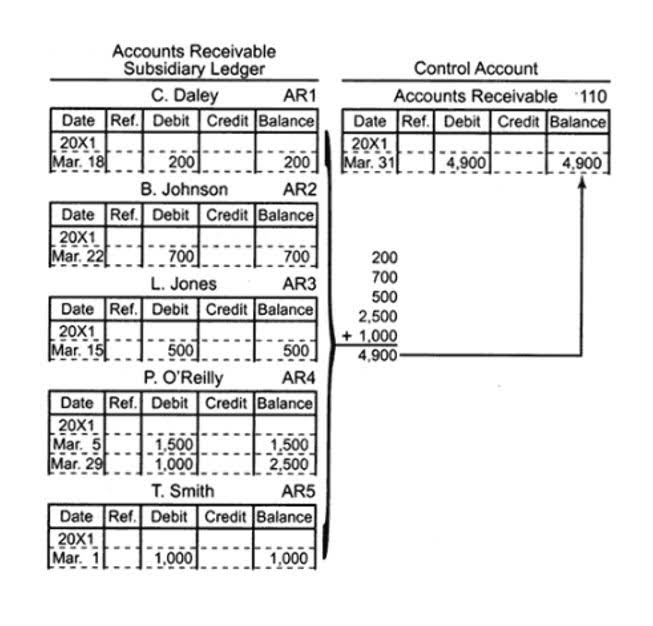What Is a Chart of Accounts & How to Set One Up?

From there, you can get even more detailed, further categorizing items by their business function, company divisions, product and service lines, and more. Therefore, while every COA uses the same building blocks – balance sheet and income statement accounts – how deep you delve into each of those blocks is up to you. In sum, revenue and expense accounts are not merely placeholders for figures; they’re the litmus test of your business operations, signaling the health and potential growth of your enterprise. Assets are what your business owns—these can range from liquid resources like cash and investments to fixed assets such as property and equipment. Sub-categories under assets allow for detailed tracking and management, which is key to understanding your company’s value and financial capabilities.

Step 3: Create the Account Numbers and Names

Cost of Goods Sold is a general ledger account under the perpetual inventory system. A current asset whose ending balance should report the cost of a merchandiser’s products awaiting to be sold. The inventory of a manufacturer should report the cost of its raw materials, work-in-process, and finished goods. The cost of inventory should include all costs necessary to acquire the items and to get them ready for sale.
- Chart of accounts (COA) is simply a list of account names that a company uses in its general ledger for recording various business transactions.
- A COA is a list of the account names a company uses to label transactions and keep tabs on its finances.
- Get free guides, articles, tools and calculators to help you navigate the financial side of your business with ease.
- By creating a COA, you’re setting up a unique list of all the account categories you’ll use to keep track of your business’s finances.
- Similarly, if you use an online program that helps you manage all your accounts in one place, like Mint or Personal Capital, you’re looking at basically the same thing as a company’s COA.
Chart of Accounts Examples, Template, and Tips
- An added bonus of having a properly organized chart of accounts is that it simplifies tax season.
- Even worse, if your competition has a highly efficient and streamlined COA, they will always have a competitive advantage over you.
- Shmuel is Datarails’ Content Manager with a passion for simplifying finance for individuals and businesses.
- For example, a retail business might have specific accounts for inventory purchases and sales, while a service-based business might need accounts for different types of service revenue.
- A well-structured chart of accounts (COA) facilitates precise financial reporting and enables organizations to make informed decisions.
A small business will likely have fewer transactions and accounts than a larger one, meaning a three-digit system of identification codes might suffice. Similarly, your liability accounts are a list of the debts your business owes income statement to creditors. Naturally, items like accounts payable, invoices payable, interest payable, accrued liabilities, sales tax payable, and other liabilities fall within this list.
Can a chart of accounts be customized to fit specific business needs?
She would then make an adjusting entry to move all of the plaster expenses she already had recorded in the “Lab Supplies” expenses account into the new “Plaster” expenses account. To do this, she would first add the new account—“Plaster”—to the chart of accounts. Bench simplifies your small business accounting by combining intuitive software that automates the busywork with real, professional human support. The 500 year-old accounting system where every transaction is recorded into at least two accounts. Sales are reported in the accounting period in which title to the merchandise was transferred from the seller to the buyer. Liabilities also include amounts received in advance for a future sale or for a future service to be performed.

The structure of a chart of accounts is normally as complex as the business structure of the company. For example, the type chart of accounts example and number of accounts needed by a large corporation would significantly differ from those needed by a small retailer. Similarly many accounts that are essential in manufacturing businesses are not used by merchandising companies. In this sample chart of accounts, the code is a number, but could be any appropriate system which allows accounts to be grouped together. It is normally better to use chart of accounts numbering for account codes as this speeds up the entering of bookkeeping transactions using the numeric key pad on a typical keyboard.
- Some of the components of the owner’s equity accounts include common stock, preferred stock, and retained earnings.
- By assigning unique identifiers to each account within these categories, you’re able to categorize and sort financial transactions effortlessly, making the financial reporting process more transparent.
- This is crucial for providing investors and other stakeholders a bird’s-eye view of a company’s financial data.
- Revenue accounts record the revenue generated by the entity from revenue-generating operations.
- Assigning numbers to accounts is a thoughtful process, designed to accommodate future expansions by reserving gaps for new accounts as the business grows or diversifies.
- Business functions or company divisions may also organize the sub-accounts.
- But the final structure and look will depend on the type of business and its size.
It’s probably fair to say that most small business owners aren’t finance experts, nor Online Bookkeeping did they get into their field to stare at spreadsheets and financial reports all day. Our partners cannot pay us to guarantee favorable reviews of their products or services. The account’s unique identifier (e.g., 1010.1) is used to specify where the debit or credit is to be recorded.
